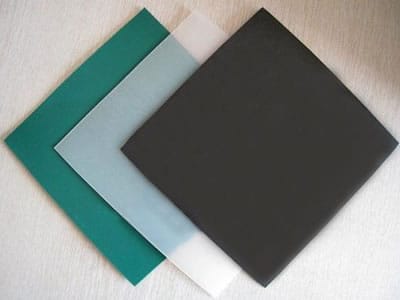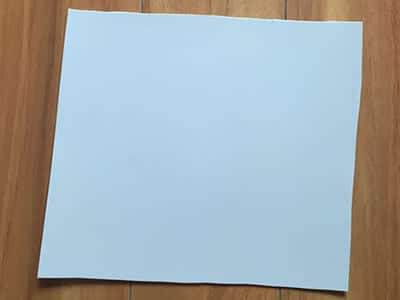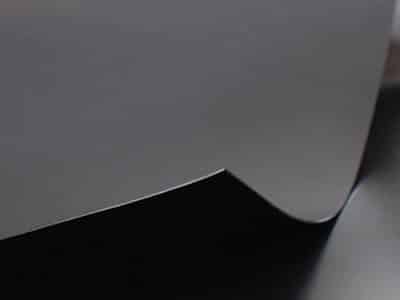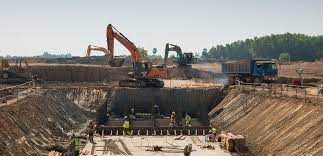What is HDPE Geomembrane
High-Density Polyethylene
HDPE geomembrane liner is the preferred product for lining projects. HDPE liner is resistant to many different solvents and are the most widely used geomembrane liner in the world. Although HDPE geomembrane is less flexible than LLDPE, it provides higher specific strength and can withstand higher temperatures. Its exceptional chemical and ultraviolet resistance properties make it an extremely cost-effective product.
Benefits of HDPE
- The most chemically resistant member of the polyethylene family due to its dense configuration.
- The best QC-QA testing capabilities in the marketplace.
- No need to cover the liner because it is UV stable = cost-effective.
Applications
- Irrigation ponds, canals, ditches & water reservoirs
- Mining heap leach & slag tailing ponds
- Golf course & decorative ponds
- Landfill cells, covers, & caps
- Wastewater lagoons
- Secondary containment cells/systems
- Liquid containment
Technical Notes
- HDPE is a very technical product to work with. It must be installed by certified welding technicians using specialized welding equipment to ensure performance.
- Installations are temperature and poor weather sensitive.
Types of Geomembrane
Comparative study of three different kinds of geomembranes (PVC-P, HDPE, EPDM) used in the waterproofing of reservoirs.



What is the difference between geomembrane HDPE and PVC?
PVC geomembranes are flexible and relatively easy to handle, while HDPE Geomembranes is tough and non-flexible. HDPE geomembranes tend to exhibit a sharp peak in their stress-strain curve and therefore, tend to undergo a relatively abrupt failure whereas PVC undergoes a very large amount of elongation before failure.
HDPE Geomembrane – Good Waterproof and Anti Leakage Effect
HDPE geomembrane is a kind of PE geomembrane, HDPE is the abbreviation of high density polyethylene, so it is also called high density polyethylene geomembrane. Be relative to HDPE geomembrane, there is another product named low density polyethylene geomembrane, that is LDPE geomembrane. The thickness of HDPE geomembrane is 0.2 mm – 3 mm. And it is made of premium polyethylene resin as material, the main ingredients is 97.5% high density polyethylene, about 2.5% of carbon black, anti aging agent, antioxidant, ultraviolet absorbent, stabilizer as accessories, etc. What’ s more, its anti seepage and isolation performance are strong. Suitable for pools, canals, embankments, landfill, tunnel and many other places.
in which we apply the Geomembrane.

- Waterproofing of agricultural dams
- Swimming pools for fish farming
- Irrigation channels
- Estercoleras (pig farming among others)
- Silage
- Tanks, etc.

- Waterproofing of Slabs
- Reservoirs
- Retaining walls and areas subject to infiltration
- Planters
- Landscape projects
- Waterproofing of tunnels, etc.
sum up
Thanks to the color of the sheet, maximum integration with the environment is obtained, or the surface appearance of the geomembrane is enhanced in the case of ornamental applications. The thickness of the coextruded layer can be variable.
The application of this system covers the 3 most important points; ECONOMIC, SOCIAL AND ENVIRONMENTAL.
These are some projects, in which we apply the Geomembrane.
